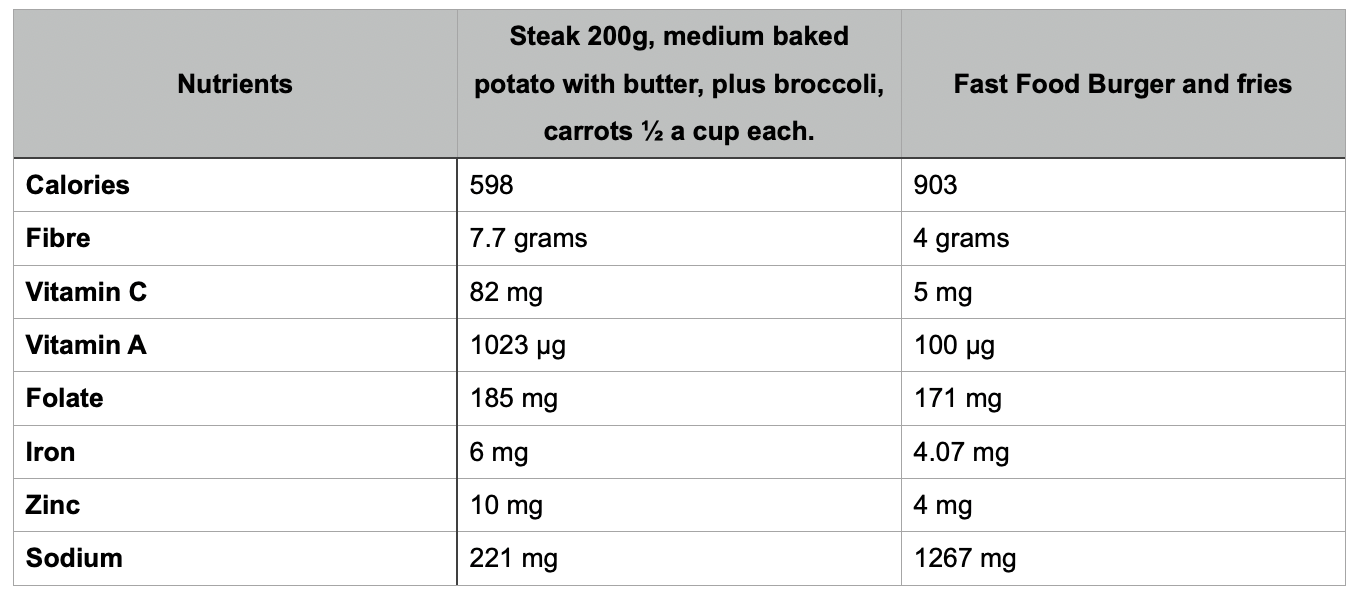How to increase your nutritional intake using Whole foods
10 Processed Foods to Avoid and 11 tips to increase whole foods in your diet.
To function and maintain our body at its optimal best, we need a vast array of vitamins, minerals, and phytonutrients. Vitamins are necessary for energy production, immune function, blood clotting and other functions. Minerals play an essential role in growth, bone health, fluid balance and several different processes. Phytonutrients provide antioxidant, anti-inflammatory activities, enhance immunity and repair DNA damage from exposure to toxins.
When food is highly processed, the higher the probability that it has had its nutritional value reduced or limited, e.g. white flour has had fibre and mineral removed. To compound this, processed food has gained additives, preservatives, fillers, sugar, sodium, unhealthy fats, and refined starch.
Whole foods are plant foods or animal-based produce that is unprocessed and unrefined. This means the food you eat has had as little as possible processing or refinement before being consumed.
Whole foods include:
Fruit and vegetables in their natural state or those that are frozen or canned with no additives are a source of whole food. Fruit drinks with added sugar, veggie chips, fruit roll-ups, corn flakes, pea snap chips are not wholefood
Nuts and Seeds; those that are in their natural state, not those sweetened or highly processed.
Beans and legumes: in their whole state including canned beans.
Meat, Seafood and Poultry: preferably organically sourced that is not highly proceeds, e.g., chicken breast or a fish fillet, not chicken nuggets or battered fish.
Milk and Dairy Products. Plain milk, regular cheese and yoghurt are minimally processed, with the "processing" caused mainly by bacteria, moulds, etc.
Pre-prepared food that is minimally processed for convenience, canned or frozen fruit and vegetables, pre-packaged leafy green salad, sliced fruits.
What is processed food
Foods can be processed to extend the shelf life, add convenience, to make them taste, look, or smell different. For these changes to occur, processed food must have changed the structure, and for most these means a difference in their nutritional components. The scale the food is processed can range from minimal pre-cut vegetable or frozen vegetable to highly processed, e.g. peas compared to green pea snack crisps.
The best way to understand if the amount of processing a food has undergone is by looking at the ingredient list, the longer the list, the more processed. For example, the ingredient list for black pepper green pea snacks is green peas, canola oil, rice, black pepper seasoning ( maltodextrin, salt, sugar, pepper, mushroom powder, onion powder, garlic powder, yeast extract, white distilled vinegar powder, natural flavours, citric acid), calcium carbonate, ascorbyl palmitate. Also, look at the product's main ingredient and ensure the main product still looks as close to nature as possible (not the case in this instance).
Another example is when you compare a steak and vegetable dinner and a fast-food burger with fries as per the table below, less-processed steak and potato dinner contains about 305 fewer calories and a fraction of the sodium as the fast-food burger with fries, as well as more protein, fibre, and other nutrients.
10 Foods to avoid
Fast Food: French fries, burgers, pies, sausage rolls, hot dogs, chicken nuggets, etc.
Added trans fats.
Added sugars and sweets: Table sugar, juice, pastries, biscuits, cakes, lollies, sweetened iced tea, sugary energy drinks,
Refined grains: White rice, white pasta, white bread, processed cereals, cereal bars
Packaged and convenience foods: frozen dinners, noodle meals, dried soup mixes.
Processed vegan-friendly foods: Plant-based meats like Tofurkey, faux cheeses, vegan butter, etc.
Processed dairy: ice cream, flavoured yoghurts and milk,
Processed animal products: ham, luncheon, deli meats, bacon, sausages, low-quality rissoles, beef jerky, fish fingers, chicken nuggets
Processed gluten-free products: biscuits, cakes
Artificial sweeteners: Equal, Splenda, Sweet’N Low, etc.
11 Tips to increase intake of whole foods
Avoid the aisles in grocery stores and shop around the outside of the aisles. The aisles contain a high percentage of processed shelved food, around the edge are the fresh fruit and vegetable sections, dairy compartment, butchers, bakery and bulk nuts and seed section.
Choose whole grains instead of refined grains whenever possible, e.g. whole grain roll instead of white roll.
Swap white pasta for vegetable noodles.
Swap the pack of potato chips or fries for a baked potato with chopped green onions and greek yoghurt.
Swap your processed cereal for whole organic cut rolled oats and berries for breakfast.
Make up your own trail mix full of nuts, seeds, coconut, dried fruit.
Snack on pre packed fresh fruit, e.g. banana, orange, mandarin, apple
Swap chicken nuggets for chicken breast.
Swap your processed frozen soft drink for a fresh fruit smoothie or organic no added sugar juice.
Eat a healthy plate, always fill half your plate with fruit or vegetables.
Grow your own vegetables and fruit.

